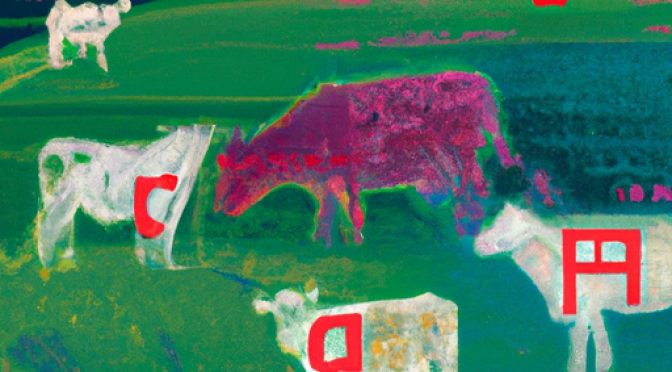Introduction
Livestock management and health are crucial aspects of the agricultural industry. With the advancements in artificial intelligence (AI), new tools and technologies have emerged that can revolutionize the way we manage and care for livestock. This article explores the various ways in which AI-driven tools can enhance livestock management and improve animal health.
1. Automated Monitoring and Data Collection
AI-driven tools can automate the monitoring of livestock by using sensors and cameras. These tools can collect real-time data on various parameters such as temperature, humidity, feeding patterns, and animal behavior. By analyzing this data, farmers can gain valuable insights into the health and well-being of their livestock.
2. Early Disease Detection
One of the significant advantages of AI-driven tools is their ability to detect diseases in livestock at an early stage. By analyzing data collected from various sources, such as temperature sensors, activity monitors, and even facial recognition, AI algorithms can identify patterns that indicate the presence of a disease. Early detection allows farmers to take prompt action, preventing the spread of diseases and minimizing the impact on the overall herd.
3. Predictive Analytics
AI algorithms can analyze large datasets to identify patterns and trends in livestock health. By using predictive analytics, these tools can forecast potential health issues or disease outbreaks. Farmers can then take preventive measures, such as adjusting feed, implementing vaccination programs, or improving hygiene practices, to mitigate the risks and ensure the well-being of their livestock.
4. Precision Feeding and Nutrition
AI-driven tools can optimize livestock nutrition by analyzing data on animal weight, growth rate, and feed consumption. By considering various factors such as breed, age, and environmental conditions, these tools can recommend precise feeding plans tailored to individual animals or groups. This approach maximizes feed efficiency, reduces waste, and ensures that each animal receives the necessary nutrients for optimal health and growth.
5. Reproductive Management
AI can play a significant role in improving reproductive management in livestock. By analyzing data on animal behavior, hormone levels, and breeding history, AI-driven tools can predict the optimal time for breeding. This helps farmers maximize breeding success rates and improve genetic selection, leading to healthier and more productive herds.
Conclusion
AI-driven tools have the potential to revolutionize livestock management and health. By automating monitoring, enabling early disease detection, providing predictive analytics, optimizing nutrition, and enhancing reproductive management, these tools can significantly improve the well-being and productivity of livestock. As AI continues to advance, it is essential for farmers to embrace these technologies to stay competitive and ensure sustainable and efficient livestock farming practices.

